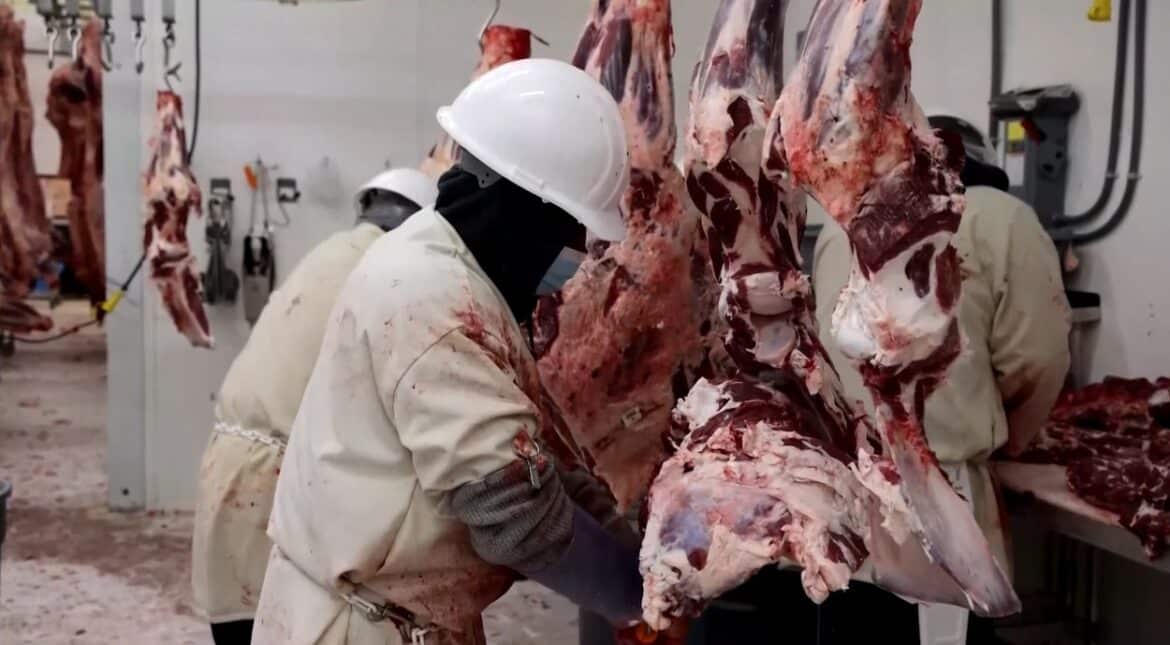Agriculture Secretary Tom Vilsack announced $223 million dollars in grants and loans on Wednesday to increase competition in the meat processing industry. The administration has said a lack of competition in the industry has both depressed prices for producers and raised prices for consumers.
The Biden administration plans to invest $73 million to fund 21 grant projects in the first round of the Meat and Poultry Processing Expansion Program, or MPPEP; $75 million will go to eight projects through the Meat and Poultry Intermediary Lending Program; and another $75 million will be directed to four meat and poultry-related projects through the Food Supply Chain Guaranteed Loan program.
Northern Ag Network’s Colter Brown spoke with Vilsack who said this is a multi-pronged approach to add more processing capacity for the industry, create more marketing opportunities for producers and more buying options for consumers.
“At the end of the day, it’s really about helping farmers have choices and options,” Vilsack said. “If they have choice and options, in terms of where they market their livestock, they’re going to get a better price. As we expand capacity we strengthen that local and regional food system, we create opportunities for folks to be able to buy local, which is going to create a more stable food system. This is just the beginning. We expect that we’ll probably look at another 10 or 15 grants from round one of financing and then there will be a second round of funding in 2023.”
“We’re excited about these projects,” Vilsack said. “We think it’s going to expand capacity of beef, pork and mixed processing by over 500,000 head a year, and we think it will expand capacity in poultry of nearly 34 million birds a year.”
The focus on meatpacking competition stems from supply chain problems that hit livestock producers and consumers during the peak of the COVID-19 lockdowns. President Joe Biden also started 2022 meeting with producers and laying out his administration’s plan to invest as much as $1 billion to expand competition in the meatpacking industry.
“The president had a number of goals when he set this plan forward last January,” Vilsack said. “I think he clearly wanted to increase competition and expand capacity. He wanted to strengthen the supply chain, and I think he wanted to make sure that we fostered a producer-focused business model, strengthen local and regional food systems, reduce barriers to processing, do things at scale, help create jobs and over time, lower costs to consumers by expanding choice.”
Brown asked Vilsack with the large increase in processing capacity that’s taking place, coupled with a shrinking national beef cowherd, how USDA ensures these new plants stay viable long term.
“As we evaluated over 300 applications that we received, we wanted to take into consideration the financial wherewithal and capacity for these operations to be successful,” answered Vilsack. “We think that the grants are going to facilities that have adequate supply, that have adequate labor, that are financially sound. We did however set up the Intermediary Relending Program which creates resources in a number of states so that when and if there is a difficult situation, there is a place where folks can go and potentially get some help.”
One of the projects that Vilsack highlighted was the Montana Premium Processing Cooperative, a producer owned co-op started by Montana Farmers Union (MFU).
“I’m just ecstatic about this USDA grant, this will ensure that we’re going to be successful,” MFU President Walter Schweitzer told Northern Ag Network. The Montana Premium Processing Cooperative is made up of over 50 farmers and ranchers who are already marketing their meat direct to the consumer and this will allow them to control their own destiny and utilize their own facility to schedule harvest and meat processing.”
Finding adequate labor is a concern for almost every meat processors, large or small. Schweitzer says they hope to be able to be part of the solution in developing the future work force for processors.
“MSU-Northern would like to start a meat science curriculum and we would like them to be able to utilize this facility to help train our next butchers, our next inspectors and possibly even the entrepreneur that will open a butcher shop in your community,” Schweitzer said.
The Montana Premium Processing Co-op will hold its grand opening November 21 in Havre and Schweitzer said that Farm Service Agency Administrator Zach Ducheneaux will be touring the plant himself on November 15.
The announcement by USDA met wide support from cattle producer organizations. The National Cattlemen’s Beef Association commended USDA for making the investment to expand the nation’s beef processing capacity. NCBA Senior Director of Government Affairs Tanner Beymer said, “NCBA has long advocated for expanded processing capacity to provide cattle producers with additional options for turning their cattle into high-quality beef. Today, the cattle industry needs more targeted capacity in high-need areas, and we look forward to these facilities launching and expanding operations.”
Beyond the $223 million, USDA expects to announce additional projects either in December or early next year, as well as open applications for another $150 million in funding for a second round of project announcements that would come later in 2023.


